Power brokers of the fourth estate

Nick Logan in Carnaby Street, May 1980: according to his own prospectus The Face was to be “a new rock magazine for the Eighties” and he introduced the first issue in the Evening Standard interview reprinted below. (Photo © Chalkie Davies)
IN THE VANGUARD: The monthly magazine The Face celebrated Britain’s move away from traditional adult-oriented rock music during the 80s, while in its template as a fanzine i-D elevated Britain’s inventive street style to world-class status … Not forgetting Flexipop and a cuckoo-in-the-nest magazine that stole the name Blitz without even noticing the context in which everybody else was using it! … Plus that awkward television show out of Oxford Road, Manchester, and another from the pop powerhouse of the North, Tyne-Tees, plus the posh chappie with the plummy voice from Harpers & Queen – we’ll get round to them all soon. First: the cool glossy magazine that all mainstream media were aping before the decade was out …

The difference seven months made: In May 1980 The Face launched with Jerry Dammers of the Specials on its cover. By November the new direction was Bowie plus a feature on The Cult With No Name, as the New Romantics were first known
1980 ➤ The Face: Many editors follow their feelings, but few stay instinctively on the qui vive
In 1980, a respected ex-editor of NME staked his house on launching a new magazine that was to make style the focus of youth culture, as much as music. The Face was quickly dubbed Britain’s “style bible” and soon ranked among only half a dozen publications that had changed the direction of journalism since the Second World War. It had an impact not only on the pop press, but the mainstream media too which spawned style pages and “yoof” TV shows. Yet that May, Logan placed his faith in Jerry Dammers to launch his oracle…
First published in the Evening Standard May 1, 1980
◼ NICK LOGAN IS EITHER A MAVERICK or a masochist, depending on your view of the music business as a meat grinder. Now 33, Logan spent 10 years as writer with New Musical Express and then, as its editor, declared war on the rock-star-as-god convention with a pithy new style of pop journalism.
This week Logan makes his debut as a publisher, launching The Face, an impressive kind of new-wave Life magazine for 16-to-25-year-olds. It bears the healthy stamp of someone who do does not see the pop press as another wheel in the publicity machine.

Nick Logan, editor and owner of The Face, seminal style bible of the decade, launched in 1980. Photographed © by Frank Herrmann
“I’m looking for the kids who participate in the music scene,” says Logan. “The ones who have a good time rather than just sit at home listening to the hifi. I’m a fan and I know the excitement of being caught up with something new.” Like a junkie craving a fix, he adds: “I need a magazine.”
The rock world desperately needs the likes of Logan, experienced enough to be cynical, yet totally receptive to what’s new. With radio stations constipated by cosy playlists and deejays so uninformed they are babes at the hands of pluggers, it’s still down to the feuding music publications to pursue new trends and break them.
And if the names featured in the first issue of The Face are familiar copper-bottomed sellers, they’re very now: John Lydon “at home”, Jerry Dammers of the Specials admitting that Two-Tone has become almost a cliché, Ian Dury reviewing Wertheimer’s recent Elvis photobook.
The writing is mercifully articulate, Logan having recruited from his earlier days writers like Adrian Thrills, Tony Parsons and Julie Birchill. And the photo-spreads are sure to become a talking point – like the anti-fashion feature titled “You’re not going out dressed like that”.
“I enjoy having my finger right on the pulse,” Logan says. “It’s so easy to lose touch. I remember when I started at NME, the Monkees were on every cover and a feature would mean interviewing Davy Jones’s butler. I hated them. Everyone was waiting for something else to come along. It was up to every writer to find his own bands to write about but there was such a lull. Then I got caught up with people like Fleetwood Mac, Jethro Tull, Pink Floyd and Marc Bolan. They were the underground then. After I became editor in ’73 we went through that dull period when the charts were ruled by all those tax exiles but punk proved enjoyable.”

Mouldbreakers: Face covers designed by Neville Brody in the early 80s
In the past 13 months Logan has notched sales of 200,000-plus with his fortnightly Smash Hits largely by printing chart-hit lyrics. The print order for The Face, although monthly, sounds all too tentative at 75,000.
Logan says: “I am determined to do the kind of music I like whatever marketing people say. When punk went out people were still fascinated by it. I’d jack it in if readers wanted more Abba. What The Face does is combine racy copy with a lot of photography – people do underestimate the power of good pictures. I’m still following my own feelings and I’ve put the Specials on the cover because they’ve given me a lot of pleasure over the past year. It’s groups like them who inspire me to sweat out a magazine.”
© Robin Katz, contributor to On The Line

First published in the Evening Standard, May 1, 1980
2017 ➤ How we made The Face
by Logan and Brody
Posted on 12 July 2017
FOUNDED IN 1980, The Face magazine quickly became the cultural “style bible” for UK yoof in the Swinging 80s, created by an ex-editor of the NME. It ran for 24 years and transformed the language of cool media. Along with the Sony Walkman and the AK47 rifle, The Face has been added to the Design Museum’s permanent collection. This week the mag’s creative geniuses told their secrets to Ben Beaumont-Thomas and Laura Snoad in The Guardian. . .

‘It was far from glamorous’ – Grace Jones on the (cropped) cover of The Face in January 1986. (Photo: Jean Paul Goude)
Nick Logan, editor/owner of The Face:
“ [By late 1980] it was touch and go whether I could continue. Then the New Romantics came along. It was what I had been looking for: kids going out, dressing up, enjoying themselves. And NME and Melody Maker were too sniffy to cover it.
I moved the office into a basement in Soho and would pick up ideas just looking around on the drive into work. My son was walking around in sportswear at the time – was that something just in my neighbourhood, or a story? Our writer Kevin Sampson confirmed that it was happening in Liverpool, too, so we went with it. That was the first piece on the Casuals.
Writers loved the way the material was reproduced; photographers fell over themselves to come and work for us. Kate Moss did her first ever cover with us – she was the face of The Face, personifying modernity and youth. . .” / Continued at Guardian online
Neville Brody, The Face’s art director, 1981-86
“ My work tended to be quite experimental and extreme – I was influenced by punk, dadaism and William Burroughs. I met Nick and he said: “There’s no way I’m bringing you into Smash Hits.” He was right. After he’d started The Face, he gave me a four-page interview with Kraftwerk to work on. I came back with something constructivist-influenced, with angled type and graphics, not just text and headline. He said: “Yeah, come in and do that.”
The Face was a living laboratory where I could experiment and have it published. Our golden rule was to question everything. If a page element existed just as taste or style, it could be abandoned. Page numbers could be letters or shapes increasing in size. We could start the headline on the page before. . .” / Continued at Guardian online
➢ The Face’s greatest hits, by Nick Logan
– The Guardian, December 2011
☐ ☐ ☐
LINKS TO OTHER INSIDE PAGES
 1980 ➤ ‘i-D counts more than fashion. Originate, don’t imitate’
1980 ➤ ‘i-D counts more than fashion. Originate, don’t imitate’
This was the mantra declaimed
in issue one by Caroline Baker,
i-D magazine’s
original fashion editor.
It was to reverberate down through the rest of the 1980s…
➢ CLICK – How straight-ups set the style for a decade, 30 years ago
☐ ☐ ☐
1980 ➤ New Sounds New Styles,
the New Romantic playpen
➢ CLICK – Forecasts about the future of club culture canvassed by New Sounds New Styles from the Romantics in 1981
☐ ☐ ☐
1980 ➤ When new media meant
a bendy Flexipop freebie
 On Dec 2, 1980 a new music magazine appeared called Flexipop! It was invented by music journalists Tim Lott at the age of 24, along with his business partner at the time, Barry Cain. Even after a year of the New Romantic sounds, here was another new title that thought the 2-Tone label was the saviour of British pop. Even so, Flexipop! lasted three years and 32 issues. Here’s Lott celebrating the mag’s prescience in the Guardian in 2010…
On Dec 2, 1980 a new music magazine appeared called Flexipop! It was invented by music journalists Tim Lott at the age of 24, along with his business partner at the time, Barry Cain. Even after a year of the New Romantic sounds, here was another new title that thought the 2-Tone label was the saviour of British pop. Even so, Flexipop! lasted three years and 32 issues. Here’s Lott celebrating the mag’s prescience in the Guardian in 2010…
◼ IN SOME WAYS IT WAS A BAD MAGAZINE. The design looked as if it had been executed by a chimp. The paper quality was poor and the contents were puerile. However, it had one characteristic that made it stand apart from all the other pop music magazines of that time – something that made it prophetic. Aware that it needed a gimmick to sell itself in a time of intense competition, the magazine gave away a free gift with every issue – a flimsy, coloured 7in record printed on plastic, called a flexidisc. Thus, Flexipop! was born.
 That first issue had an exclusive track by the Selecter, then at the vanguard of the 2-Tone movement. It later featured artists such as Adam and the Ants, the Jam and the Boomtown Rats… Flexipop!’s innovation [was to represent] the first reaction against the previous decade of music reportage, dominated by the NME, which were ultra-serious, almost sociological organs. Writers such as Paul Morley and Ian Penman would rarely get through 500 words without mentioning Baudrillard, Rimbaud or postmodern theory. Photos were grey, the attitude was deadly serious. Barry and I believed that pop music should be fun again…
That first issue had an exclusive track by the Selecter, then at the vanguard of the 2-Tone movement. It later featured artists such as Adam and the Ants, the Jam and the Boomtown Rats… Flexipop!’s innovation [was to represent] the first reaction against the previous decade of music reportage, dominated by the NME, which were ultra-serious, almost sociological organs. Writers such as Paul Morley and Ian Penman would rarely get through 500 words without mentioning Baudrillard, Rimbaud or postmodern theory. Photos were grey, the attitude was deadly serious. Barry and I believed that pop music should be fun again…
➢ CLICK – to continue reading Tim Lott’s Guardian piece…
☐ ☐ ☐
1981 ➤ Over four years, TV’s Oxford Road Show lapped up many a New Romantic band
Launched 16 Jan 1981, presented by Jackie Spreckley and others, it aired on Fridays on BBC2 until 29 Mar 1985. Early new bands who played included Blue Rondo a la Turk, The Cure, Duran Duran, Simple Minds, Spandau Ballet and The Smiths.
➢ VIEW ♫ ♫ Fine Northern Soul footwork from Rondo mentalists performing Klacto Vee Sedstein in this live TV performance on ORS :
☐ ☐ ☐
2013 ➤ Flipside of the 80s fashion revolution
One former Blitz Kid set out this year finally to provide a long-needed corrective to the version of 80s cultural history mainly dominated by the pop music wheelerdealers. Iain R Webb is the St Martin’s graduate who went on to become the savviest fashion editor in the mainstream national press, but first proved his mettle by hijacking a moribund magazine which by chance had picked itself the right name.
As Seen in BLITZ, Fashioning 80s Style, is his book documenting his own distinctive take on the decade of egotism as he blazed a five-year trail while marshalling in his maverick pages a Who’s Who of the fashion shapers of the 80s, all of whom put London Fashion Week on the international agenda.
➢ Previously at Shapersofthe80s: London as global fashion hub – Webb’s book stakes its claim
OTHER MEDIA TALES YET TO COME…

Robert Elms: early star of 80s UK “yoof” TV
Quisque egestas ultricies dui, vitae gravida ipsum vestibulum non. Proin congue vestibulum purus at iaculis. Nam in malesuada felis. Sed ac augue in diam rhoncus elementum.
BLAH BLAH BLAH
Nulla et ante et ante semper pulvinar. Duis dapibus dapibus ante id volutpat. Pellentesque a mauris nec turpis et ante et ante semper pulvinar.
TAGS – Nick Logan, The Face, Neville Brody, Iain R Webb, Scarlett Cannon, Caroline Baker, Robert Elms, Oxford Road Show, Flexipop!, Tim Lott, Paul Gorman, New Sounds New Styles, Smash Hits, New Romantics, Blitz Kids, history, media, TV, street style, design, magazines, youth culture, fashion

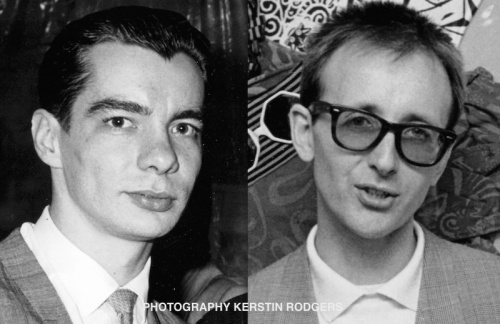



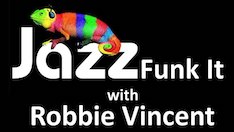



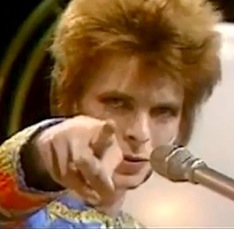
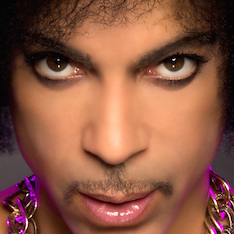
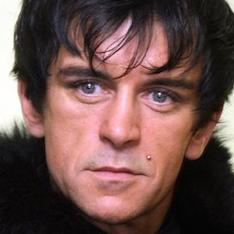

still loving it.xxx
Love this posting – The Face was a great mag – Nick Logan really was ‘looking for the kids who participate in the music scene’ – fans and bands – he published my photo of the ‘Islington Twins’ and many other scenes when no one else would
Pingback: Final Essay: Punk Rock DIY Work Ethic in Graphic Design and Art: The Origins, Influences and Impact. – EFS Art and Design